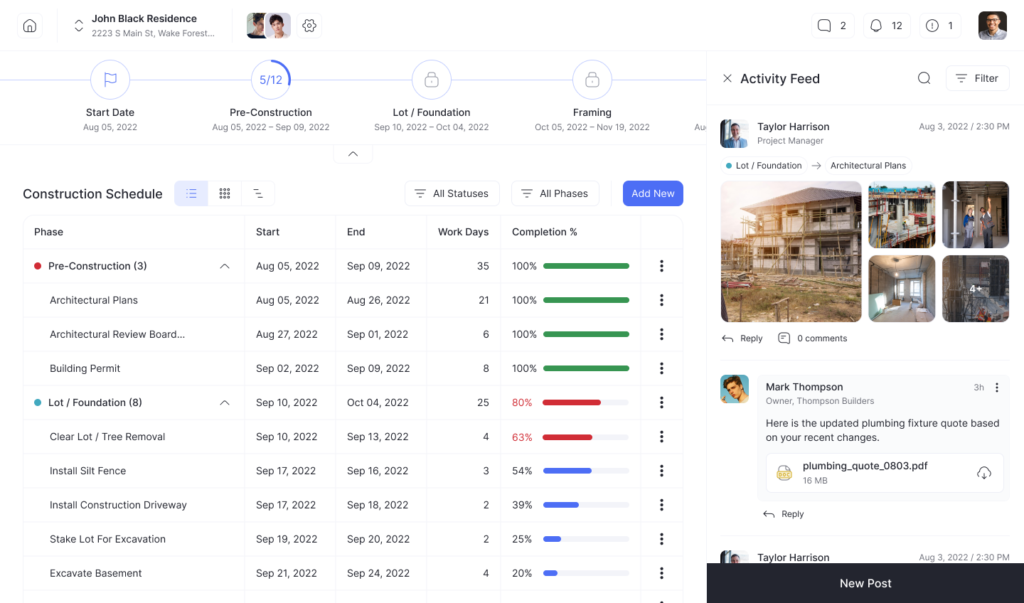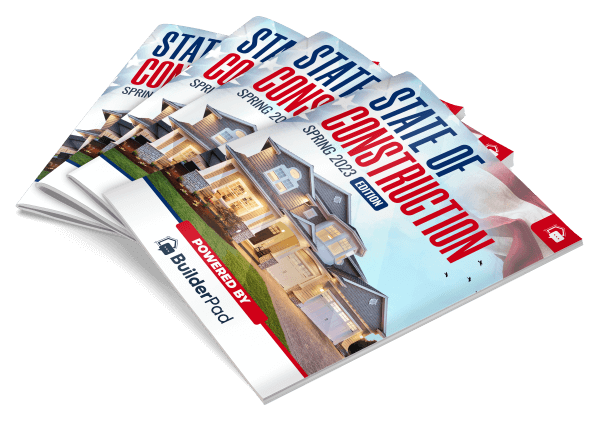The success of a construction project relies on more than just the physical construction process. A critical component often overlooked is project documentation.
This article explores the importance of thorough and accurate documentation, its impact on client satisfaction, and how it can be effectively managed.
The Importance of Project Documentation

Project documentation serves as the backbone of construction management.
It provides a written record of every aspect of the project, from initial planning to final delivery. This documentation is vital for several reasons:
- Clarity and Communication: It ensures all stakeholders, including clients, contractors, and team members, are on the same page.
- Compliance and Legal Protection: Proper documentation helps in complying with legal and regulatory requirements and can protect the company in case of disputes.
- Performance Tracking: It allows for tracking project progress, identifying delays or issues, and implementing timely corrective measures.
Key Components of Effective Documentation

Effective project documentation should encompass various elements:
- Project Plans and Specifications: Detailed plans, blueprints, and specifications form the foundation of the project. They provide a clear roadmap for construction and ensure that all team members understand the scope and details. Accuracy in these documents prevents costly misunderstandings and errors during construction.
- Contracts and Agreements: These documents outline the terms, conditions, and responsibilities of all parties involved. They serve as legally binding agreements that protect the interests of both the client and the construction firm. Clearly defined contracts prevent disputes and ensure smooth project execution.
- Progress Reports: Regular updates on the project’s status, including any changes or deviations from the original plan. These reports keep all stakeholders informed about the current state of the project and help in making timely decisions. They are crucial for tracking milestones and ensuring the project remains on schedule.
- Financial Records: Detailed accounts of all project-related expenditures and budgeting. These records are essential for financial transparency and for tracking the financial health of the project. They help in identifying areas of overspending and enable better budget management.
- Correspondence: Communication between stakeholders, including emails and meeting minutes. This documentation captures the decision-making process and ensures that all communications are recorded for future reference. It is vital for maintaining a historical record of interactions and decisions.
- Change Orders: Documentation of any changes made to the original plan, including the reasons and approvals. Change orders are critical for managing scope creep and ensuring that any alterations are well-documented and agreed upon. They help in avoiding misunderstandings and disputes over project modifications.
- Quality Control Reports: Records of inspections, tests, and compliance with standards. These reports demonstrate adherence to quality standards and regulatory requirements. They are essential for building client trust and ensuring the long-term durability and safety of the construction project.
Strategies for Managing Documentation

To effectively manage project documentation, construction managers should adopt the following strategies:
- Leverage Technology: Utilize construction management software for real-time documentation, storage, and easy access to documents. Digital tools can automate many aspects of documentation, reducing the chance of human error and improving efficiency. Cloud-based solutions allow team members to access documents from anywhere, enhancing collaboration.
- Standardize Processes: Implement standardized forms and procedures for consistent documentation across all projects. This standardization ensures uniformity in the way information is recorded and reported. It also simplifies training for new staff and ensures consistency across different teams and projects.
- Regular Updates and Reviews: Ensure that documents are regularly updated and reviewed for accuracy and completeness. Scheduled reviews help in catching and correcting errors early, maintaining the integrity of the documentation. This practice also ensures that all stakeholders have access to the most current information.
- Training and Accountability: Train staff on the importance of documentation and hold them accountable for maintaining accurate records. Emphasizing the role of documentation in project success can foster a culture of diligence and attention to detail. Regular audits and feedback can reinforce this accountability.
- Client Involvement: Keep the client informed and involved through transparent documentation practices. Engaging clients in the documentation process enhances their confidence in the project management and can lead to more informed decision-making. It also helps in aligning client expectations with the project’s realities.
Builderpad provides streamlined tools for effective communication, tagging, document sharing and more:

Impact on Client Satisfaction
Accurate and comprehensive documentation directly impacts client satisfaction in several ways:
- Transparency: It builds trust by providing clients with clear and honest information about project progress. Clients appreciate being kept in the loop, and transparency in documentation can lead to stronger client-manager relationships. This openness also makes it easier for clients to provide timely feedback and inputs.
- Conflict Resolution: Well-maintained documentation can quickly resolve misunderstandings or disputes. When there’s a written record, it’s easier to reference facts and decisions, reducing the scope for disagreements. This can be especially valuable in complex projects where multiple stakeholders are involved.
- Expectation Management: It helps in setting and managing realistic expectations through clear communication of project details. Documenting project milestones and progress
Effective project documentation is not just a bureaucratic requirement but a strategic tool in construction management. It enhances communication, ensures legal compliance, aids in performance tracking, and significantly boosts client satisfaction.
By adopting robust documentation practices, construction managers can not only streamline their projects but also build lasting relationships with their clients, paving the way for future success in the industry.
Here are 5 key takeaways from the content on the importance of project documentation in construction management:
- Thorough project documentation provides clarity and ensures all stakeholders are on the same page regarding project details and status. This enhances communication and coordination.
- Proper documentation aids legal and regulatory compliance. It also provides protection in case of disputes by maintaining clear records of decisions and agreements.
- Tracking project progress against plans and benchmarks is enabled by comprehensive documentation. This allows for timely identification and resolution of issues.
- Key components of effective documentation include project plans, contracts, progress reports, financial records, correspondence, change orders and quality control reports.
- Good documentation practices boost client confidence and satisfaction through increased transparency, better expectation setting and conflict resolution. This can lead to lasting business relationships.
In summary, diligent project documentation is vital for construction firms as it facilities communication, compliance, performance tracking and customer trust and satisfaction. It is an invaluable strategic tool rather than just a routine requirement. Adopting robust documentation practices through technology, standardization and training results in streamlined project delivery.







